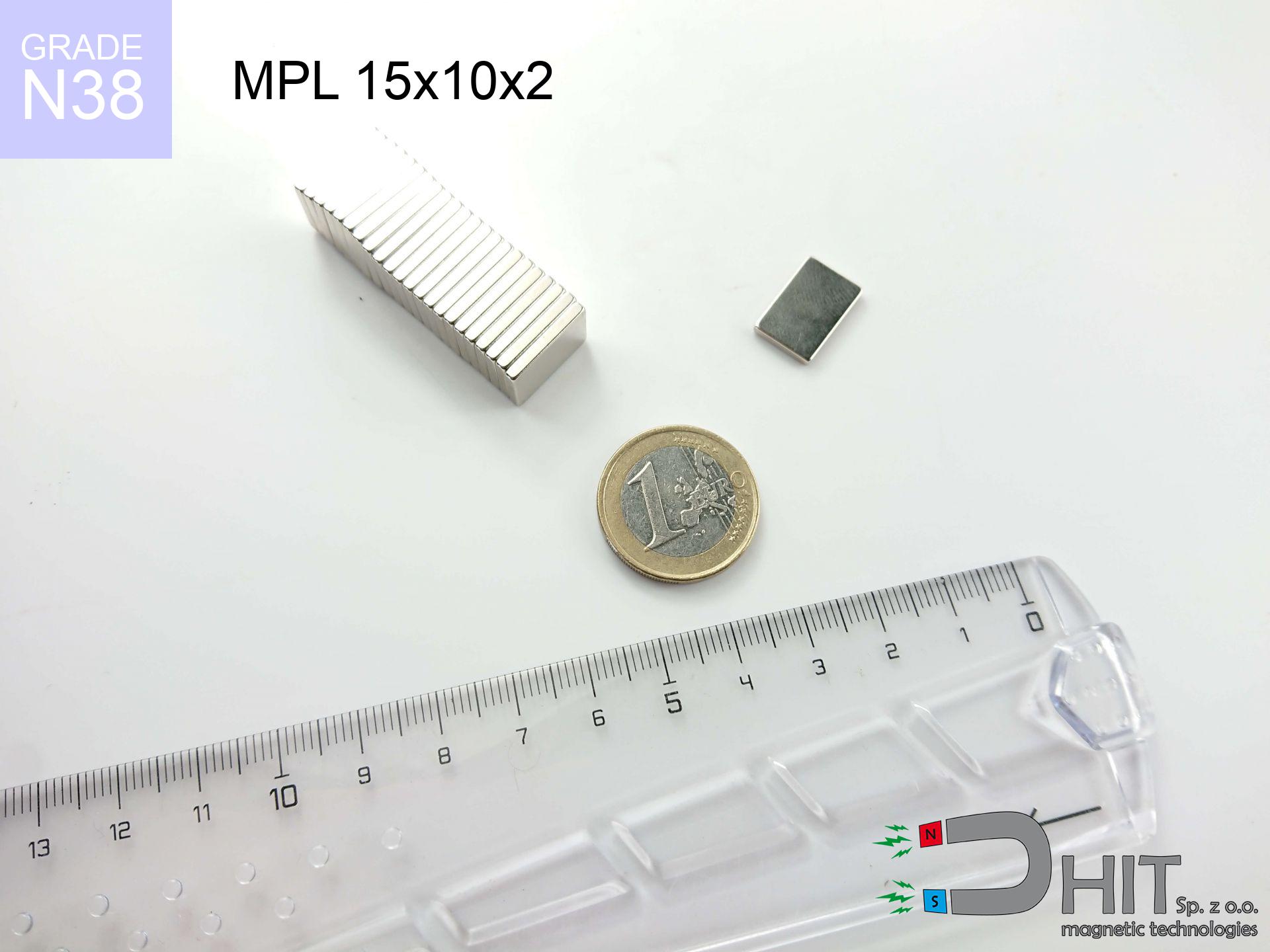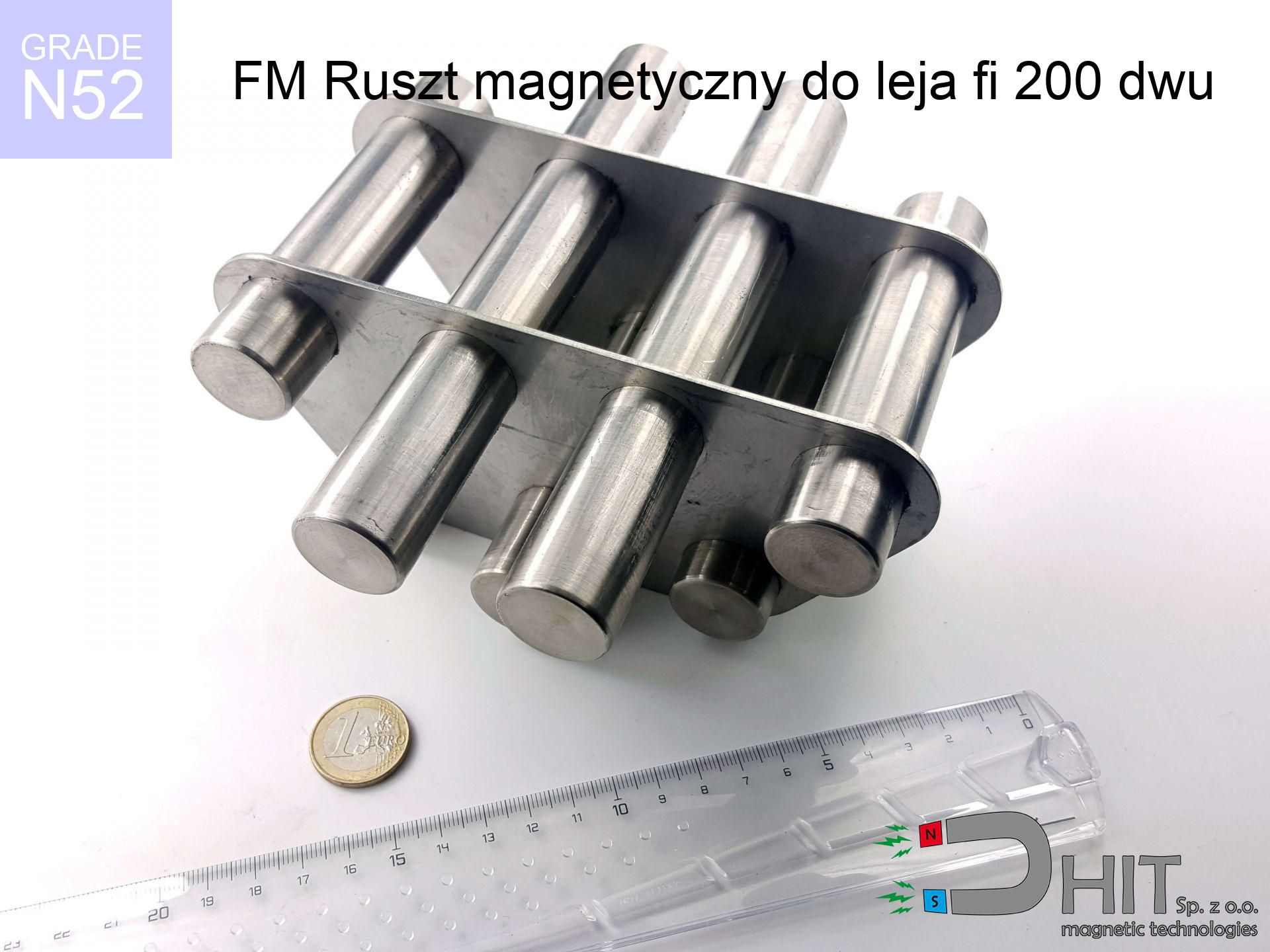SM 18x225 [2xM5] / N42 - magnetic roller
magnetic separator
catalog number 130274
GTIN: 5906301812760
diameter Ø
18
mm [±0,1 mm]
height
225
mm [±0,1 mm]
max. temperature
≤ 80
°C
catalog number 130274
GTIN: 5906301812760
diameter Ø
18 mm [±0,1 mm]
height
225 mm [±0,1 mm]
max. temperature
≤ 80 °C
498.15 ZŁ gross price (including VAT) / pcs +
405.00 ZŁ net price + 23% VAT / pcs
bulk discounts:
need more quantity?Want a better price?
Call us tel: +48 22 499 98 98 or contact us via contact form on the contact page. You can check the lifting capacity and the shape of neodymium magnets in our power calculator magnetic calculator
Orders placed by 2:00 PM will be shipped on the same business day.
Specification: magnetic separator 18x225 [2xM5] / N42
Magnetic properties of the material N42
Physical properties of sintered neodymium magnets Nd2Fe14B
Shopping tips
Advantages as well as disadvantages of neodymium magnets NdFeB.
In addition to immense power, neodymium magnets have the following advantages:
- They do not lose their strength (of the magnet). After approximately 10 years, their strength decreases by only ~1% (theoretically),
- They are exceptionally resistant to demagnetization caused by an external magnetic field,
- In other words, thanks to the shiny coating of nickel, gold, or silver, the element acquires an aesthetic appearance,
- They have very high magnetic induction on the surface of the magnet,
- By using an appropriate combination of materials, they can achieve high thermal resistance, allowing them to operate at temperatures up to 230°C and above...
- The ability for precise shaping and customization to specific needs – neodymium magnets can be produced in many variants of shapes or sizes, which expands the range of their possible uses.
- Wide application in the industry of new technologies – are utilized in HDD drives, electric motors, medical equipment or very highly developed apparatuses.
Disadvantages of neodymium magnets:
- They can break when subjected to a strong impact. If the magnets are exposed to impacts, we recommend using magnets in a protective case. The steel housing in the form of a holder protects the magnet from impacts, and at the same time increases its overall strength,
- They lose strength at high temperatures. Most neodymium magnets experience permanent loss of strength when heated above 80°C (depending on the form and height). However, we also offer special magnets with high temperature resistance, up to 230°C,
- Due to their susceptibility to corrosion in a humid environment, we suggest using waterproof magnets made of rubber, plastic, or other moisture-resistant materials when using them outdoors,
- Limited ability to create threads or complex shapes in the magnet - the use of a housing is recommended - magnetic holder
- Possible danger to health from tiny fragments of magnets pose a threat, when accidentally ingested, which is crucial in the aspect of protecting young children. Additionally, tiny parts of these devices are able to be problematic in medical diagnosis when they are in the body.
Handle with Care: Neodymium Magnets
Keep neodymium magnets as far away as possible from GPS and smartphones.
Neodymium magnets are a source of intense magnetic fields that cause interference with magnetometers and compasses used in navigation, as well as internal compasses of smartphones and GPS devices.
Neodymium Magnets can attract to each other due to their immense internal force, causing the skin and other body parts to get pinched and resulting in significant swellings.
Magnets will attract each other within a distance of several to about 10 cm from each other. Don't put your fingers in the path of magnet attraction, as a serious injury may occur. Depending on how massive the neodymium magnets are, they can lead to a cut or alternatively a fracture.
The magnet coating contains nickel, so be cautious if you have a nickel allergy.
Studies show a small percentage of people have allergies to certain metals, including nickel. An allergic reaction often manifests as skin redness and rash. If you have a nickel allergy, you can try wearing gloves or simply avoid direct contact with nickel-plated neodymium magnets.
Neodymium magnets can become demagnetized at high temperatures.
Although magnets are generally resilient, their ability to maintain their magnetic potency can be influenced by factors like the type of material used, the magnet's shape, and the intended purpose for which it is employed.
Neodymium magnets are not recommended for people with pacemakers.
Neodymium magnets generate very strong magnetic fields that can interfere with the operation of a pacemaker. This is because many of these devices are equipped with a function that deactivates the device in a magnetic field.
Neodymium magnets should not be in the vicinity youngest children.
Neodymium magnets are not toys. You cannot allow them to become toys for children. In such a situation, surgery is necessary to remove them. In the worst case scenario, it can result in death.
Dust and powder from neodymium magnets are flammable.
Avoid drilling or mechanical processing of neodymium magnets. If the magnet is crushed into fine powder or dust, it becomes highly flammable.
Neodymium magnets are the strongest magnets ever invented. Their power can shock you.
To handle magnets properly, it is best to familiarize yourself with our information beforehand. This will help you avoid significant harm to your body and the magnets themselves.
Neodymium magnets are characterized by their fragility, which can cause them to crumble.
Neodymium magnets are characterized by significant fragility. Neodymium magnets are made of metal and coated with a shiny nickel surface, but they are not as hard as steel. At the moment of connection between the magnets, small metal fragments can be dispersed in different directions.
You should maintain neodymium magnets at a safe distance from the wallet, computer, and TV.
Neodymium magnets generate intense magnetic fields that can destroy magnetic media such as floppy disks, video tapes, HDDs, credit cards, magnetic ID cards, cassette tapes, etc. devices. They can also damage videos, televisions, CRT computer monitors. Remember not to place neodymium magnets close to these electronic devices.
To show why neodymium magnets are so dangerous, read the article - How dangerous are very strong neodymium magnets?.

![SM 18x225 [2xM5] / N42 - magnetic roller SM 18x225 [2xM5] / N42 - magnetic roller](https://cdn3.dhit.pl/graphics/products/sm-18x225-2xm5-wiv.jpg)

![magnetic separator 18x150 [2xM5] / N42 magnetic separator 18x150 [2xM5] / N42](https://cdn3.dhit.pl/graphics/products/sm-18x150-2xm5-pec.jpg)
![magnetic separator 18x275 [2xM5] / N42 magnetic separator 18x275 [2xM5] / N42](https://cdn3.dhit.pl/graphics/products/sm-18x275-2xm5-zep.jpg)


